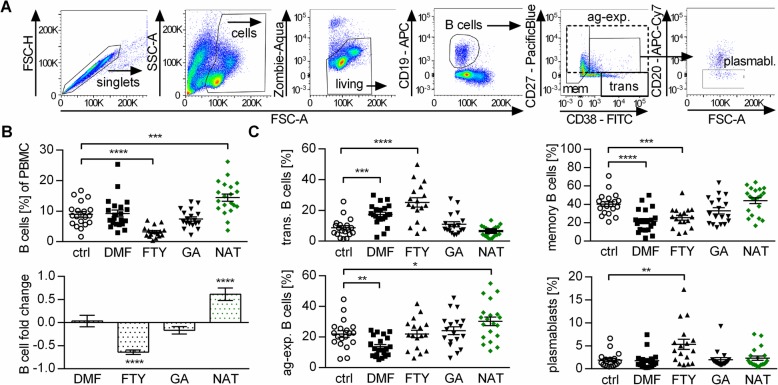Fig. 1.
B cell subset frequencies are altered by established MS medications. Peripheral blood mononuclear cells (PBMC) were isolated from controls (n = 19; circles) or dimethyl fumarate (DMF; n = 21; squares)-, fingolimod (FTY; n = 17; triangles up)-, glatiramer acetate (GA; n = 18; triangles down)-, and natalizumab (NAT; n = 20; diamonds)-treated multiple sclerosis patients. Cells were stained with the respective antibodies and analyzed using flow cytometry. Bars represent standard error of the mean (SEM); * P < 0.05; **P < 0.01; ***P < 0.001; ****P < 0.0001; unpaired t test. a Exemplary gating strategy: within all recorded events, doublets were excluded and living cells were determined using size exclusion and staining with Zombie dye. CD19+ B cells were further subdivided into transitional B cells (trans; CD27− CD38+), antigen-experienced B cells (ag-exp.; CD27+), and memory B cells (mem; CD27var; CD38−). Within the CD27+ CD38+ cells, plasmablasts (plasmabl.; CD20− CD27+ CD38+) were defined as CD20−. b Mean frequency and fold changes (treated/control 1; e.g., a value of − 0.4 represents a reduction by 40%) ± SEM of CD19+ B cells within the PBMC pool, grouped according to the patient’s treatment. c Mean frequency ± SEM of transitional B cells, memory B cells, antigen-experienced B cells, and plasmablasts within the B cell pool

